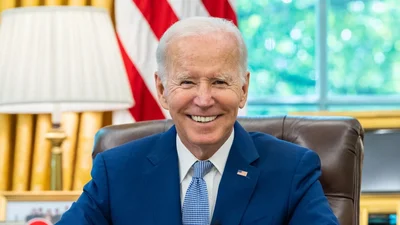The team of federal employees supporting the U.S. Department of Energy (DOE) Office of Indian Energy Policy and Programs is small but mighty. In this “Meet Our Team" blog post series, we introduce key staff dedicated to the Office and its mission to support tribes in pursuing their energy visions.
Lizana Pierce is a Senior Engineer and the Deployment Supervisor for the Office of Indian Energy. The longest-serving member of the Indian Energy team, Lizana was also profiled on our blog in 2016.
Read on to learn more about Lizana and what motivates her impactful work in the Office of Indian Energy.
I am responsible for managing the deployment program on behalf of the Office [of Indian Energy], which includes financial assistance, technical assistance, and education and outreach. I also implement national funding opportunities and administer some of the resulting tribal energy project grants and agreements.
I've had the honor and privilege of assisting tribes in developing their energy resources for over 20 years. One of the things that motivates me the most is the ability to touch people [and] to see how these energy projects have had a positive impact on the everyday lives of people and tribal communities. Another aspect is the unique perspective we get. Being a national program, we get to work with tribes and tribal organizations across the nation and, as a result, we get a broad perspective of energy development in Indian Country. As the late David Lester of the Council of Energy Resource Tribes said, "If you've met one tribe, you've met one tribe." This just exemplifies the vast diversity across Indian Country. Thankfully, I've had the pleasure of working with hundreds of tribes over the years. It's truly a unique opportunity few people get.
Some of the challenges are challenges that all tribes have-whether it be energy projects or other types of projects. There is a vast regulatory framework that goes with trust land, the uncertainty in tax laws, and-well, in Indian law, overall. I think wading through those is a challenge for many tribes in developing energy projects, especially larger-scale energy projects.
As far as opportunities go, there's a vast amount of resources the tribes have-oil, gas, coal, sun, wind, hydropower-and tremendous opportunities, especially on the community scale, to use local resources to power the local economies and to provide reliable electricity to their members.
A lot has changed over the last 20 years. It all started with a strategy session we had in 2001 with tribes and representatives of intertribal organizations and others to get their input on what their needs were and how to create the program. At that point, we were doing demonstrations of the technology. Well, that has changed. Most of the technology is mainstream, and it's pretty much commercially available.
We spent a long time providing funds for the tribes to assess their energy resources. However, since 2010, we’ve focused on funding hardware, which really does have an immediate, tangible impact on a community.
It's amazing the impact that these projects will have-not only for today but tomorrow and the next 20 to 30 years to come. It really does have a huge impact on communities, and a lot of them are looking for energy sovereignty-energy self-sufficiency, if you will-for a variety of reasons, whether it be natural disasters or unreliable electricity from the grid.
That's what really touches my heart-the fact that we do see that these funds and the assistance we provide really does have a huge impact on the communities that we work with and in the daily lives of people.
After doing hundreds of energy projects, each one is unique. I feel like they're all my babies, so it's hard to pick a favorite.
But there are some shining examples-Picuris Pueblo, for instance. We started out helping the Pueblo by providing technical assistance for them develop a strategic energy plan. Our colleagues in the U.S. Department of the Interior provided support for energy resource assessment, and we funded the hardware installation. They now have a 1-megawatt solar installation that is providing reduced electricity costs to that community-which is huge. The money being saved can now be used for other needs, such as community senior housing, and lunch programs.
Another example where you see the longevity of the project is Seneca Nation. I think it was 2003 when we started some of the first planning grants with them. And in 2017, they installed a 1.5-megawatt wind turbine for the community.
Akwesasne Housing Authority is another one. Starting with a technical assistance request to help develop their strategic energy plan, and now they're not only installing community solar on senior homes in New York, but they're now installing large-scale solar for their community.
Spokane is another one. They basically were without electricity for a period of time during the fires a number of years ago. Because of that, it created this urgency for the Tribe to become more self-reliant, and as a result they've been installing solar on their community buildings and just recently were a selected for funding to install solar on their tribal member homes.
As you can see each of these projects started with just a thought - a vision. I think that energy is pretty profound, not only in helping tribal economies, but there's a resilience and self-reliance aspect to it that I think is becoming more and more important with each passing year.
I see microgrids and local generation becoming more and more important for a variety of reasons-whether it be tsunamis on the West Coast, or thawing permafrost and flooding in villages in Alaska, or utilities in California shutting off electricity for days or weeks at a time due to the threat of fire. I think a lot of things are coming together to increase the awareness and the need or desire for self-reliance and resiliency and for reliable energy. Energy not only enables local economies but it's essential for livelihood, for storing medicine, for keeping people warm. So, it is really a basic need that should be available to all.
Source: U.S. Dept. of Energy, Office of Indian Energy Policy and Programs









